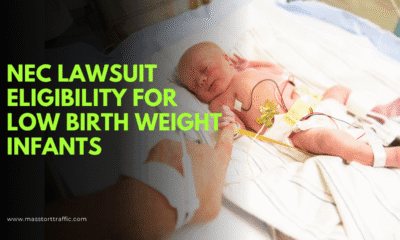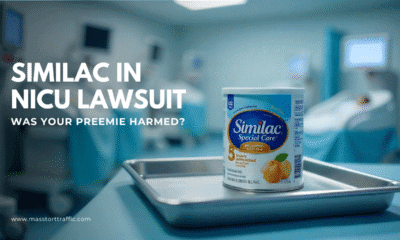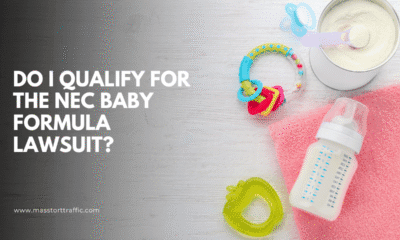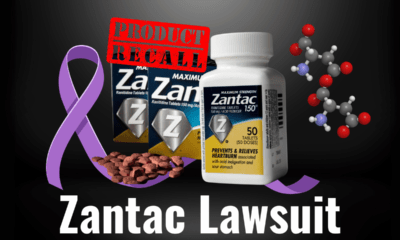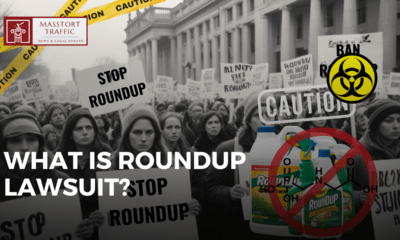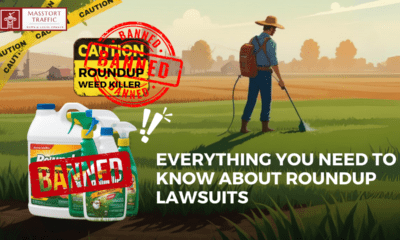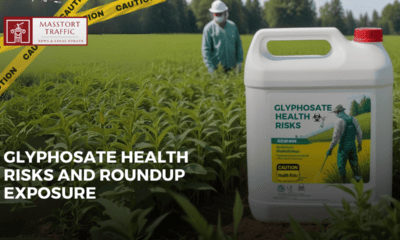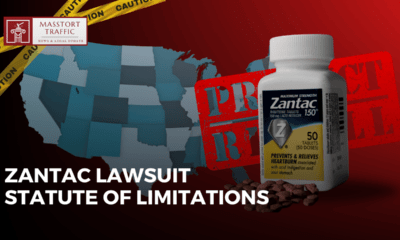Baby Formula NEC
The Truth About Enfamil Baby Formula Lawsuit: 5 Key Facts Parents Must Know

Introduction
The Enfamil Baby Formula Lawsuit has exposed a troubling reality: parents who trusted cow’s milk-based formulas to nourish their premature babies now face devastating consequences. Necrotizing Enterocolitis (NEC), a life-threatening intestinal disease, has been linked to Enfamil products like NeuroPro™ and Human Milk Fortifier. Lawsuits against Mead Johnson & Company, LLC—the maker of Enfamil—accuse the brand of prioritizing profits over infant safety by hiding NEC risks.
This blog explains how the Enfamil Baby Formula Lawsuit impacts families, how to spot NEC symptoms, and how to fight for justice if your child was harmed.
Table of Contents
What is Necrotizing Enterocolitis (NEC)?
Necrotizing Enterocolitis (NEC) is a dangerous gastrointestinal disease that often affects premature or low-birth-weight babies. Premature babies have underdeveloped digestive systems, making them more vulnerable to this condition. NEC occurs when the intestines become inflamed or damaged, leading to holes in the intestinal walls. This allows harmful bacteria to enter the bloodstream, which can cause serious infections.
Some baby formulas, especially those made with cow’s milk, can irritate the intestines and increase the risk of NEC. Research shows that cow’s milk-based formulas and milk fortifiers can significantly raise the chances of NEC in premature babies.
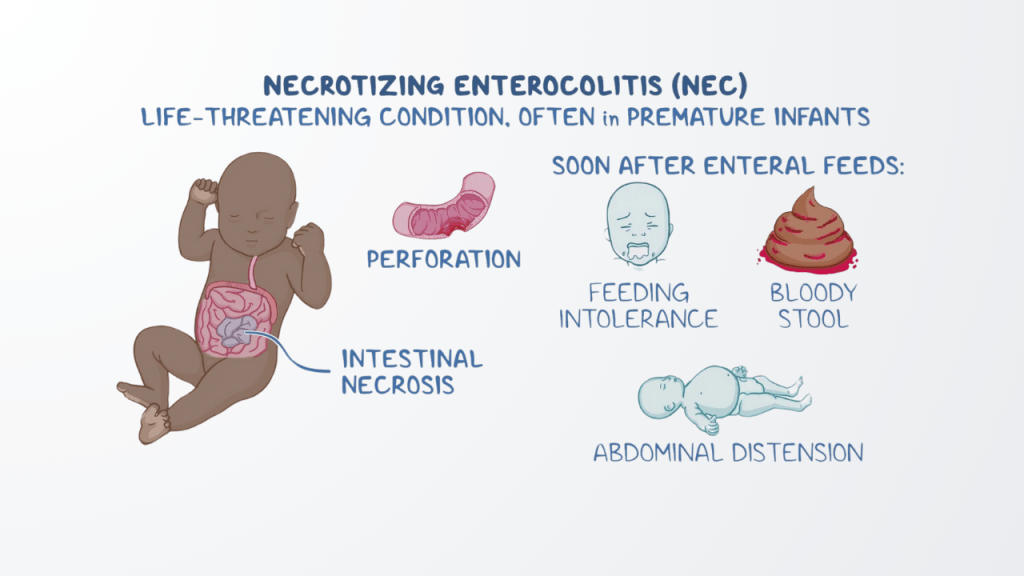
How NEC Affects Premature Babies
Premature babies are more likely to develop NEC because their intestines are not fully developed. Human breast milk is easier for babies to digest and offers protective antibodies, while cow’s milk-based formulas increase the risk of NEC. Though many babies recover from NEC, others may face long-term health issues such as neurological or nutritional problems. In some cases, NEC can even be fatal.
Enfamil Products and NEC Risk
Enfamil offers a range of baby formula products that are made from cow’s milk. These products have been linked to an increased risk of NEC in premature infants. Some Enfamil products that may contribute to this risk include:
- Enfamil™ 24 Calorie Formula
- Enfamil™ DHA-in-Sol
- Enfamil™ Enfagrow® Toddler
- Enfamil™ Enspire™
- Enfamil™ Human Milk Fortifier Acidified Liquid
- Enfamil™ NeuroPro™ EnfaCare® Preterm Baby Formula
- Enfamil™ NeuroPro™ Gentlease®
- Enfamil™ Nutramigen®
These formulas are more likely to cause NEC in premature or low-birth-weight babies compared to those who are fed breast milk.
Signs and Symptoms of NEC
If your baby is showing signs of NEC, you should immediately contact a doctor. Common signs of NEC include:
- Bloody stools
- Constipation
- Fatigue
- Green vomiting
- Feeding difficulties
- Low blood pressure
- Slow heart rate
- Breathing problems
- Swollen, red abdomen
What to Do If Your Baby Shows Symptoms of NEC
If your baby was born prematurely or has a low birth weight and is showing signs of NEC, especially if they have been fed Enfamil formula, seek medical help right away. Early diagnosis and treatment can help many babies recover. However, some may experience long-term complications, including brain damage or issues with digestion. Unfortunately, in some cases, NEC can lead to death.

Legal Action Against Enfamil for NEC
Parents whose babies have developed NEC after consuming Enfamil formulas may be able to take legal action. Enfamil is produced by Mead Johnson & Company, LLC, and lawsuits have been filed against the company for selling baby formula products linked to NEC. Families are seeking compensation for the harm caused by these dangerous products.
How to File an Enfamil Baby Formula Lawsuit
To file a lawsuit, certain criteria must be met, such as:
- Your baby being born prematurely or with a low birth weight
- A diagnosis of NEC or Short Bowel Syndrome
- Feeding your baby Enfamil formula or a similar product
A product liability lawyer can help guide you through the legal process. They can help you gather the necessary evidence, file your case, and negotiate a settlement.
What is a Product Liability Lawsuit?
A product liability lawsuit holds companies accountable for manufacturing and selling harmful products. In this case, Enfamil is being held responsible for its formulas that have been linked to NEC in vulnerable infants. If your child has been affected, a lawyer can help you build your case and represent you in court.
Why Legal Action Might Be Necessary
If your baby developed NEC after consuming Enfamil baby formula, pursuing legal action can help you receive compensation for medical bills, emotional distress, and other damages. The legal process can be challenging, but with the right lawyer, you can get the compensation your family deserves.
Take Action Now
If your baby has suffered from NEC after using Enfamil products, it’s important to take action. Contact a product liability attorney for a free case review. They can help you understand your options and guide you through the legal process to seek the compensation you deserve.
Baby Formula NEC
How to Find Out if Your Baby Was Given Cow’s Milk Formula in the Hospital
If your premature baby developed necrotizing enterocolitis (NEC), one of the most critical questions is: What were they fed in the NICU? Answering this question is the first step in a potential lawsuit, and the proof lies in your baby formula hospital records. This guide explains how to get them.
Key Takeaways: The NEC Baby Formula Lawsuit
- ◆ The Scientific Link: Decades of research show that cow’s milk-based baby formulas, such as Similac® and Enfamil®, significantly increase the risk of necrotizing enterocolitis (NEC) in premature infants. NEC is a severe and often fatal intestinal disease that causes inflammation and death of intestinal tissue.
- ◆ The Legal Claim: Hundreds of families are filing lawsuits against manufacturers Abbott Laboratories and Mead Johnson. The core legal argument is “failure to warn” — that the companies knew their products posed a deadly risk to preemies but deliberately chose not to add a warning label for parents and doctors.
- ◆ Your Family’s Rights: If your premature infant was fed a cow’s milk-based formula in the hospital and was later diagnosed with NEC, your family may be eligible to seek significant compensation for medical bills, pain and suffering, and more. Our team is actively investigating these claims to help families get the justice they deserve.
Ready to Fight for Your Compensation?
Your Free, Confidential, No-Obligation Case Evaluation is Waiting!
GET YOUR FREE CASE EVALUATION NOW →Prefer to call? Call (+1) 210-940-9440 Today
Table of Contents
Why Feeding Records Are Critical for a NEC Lawsuit
Hundreds of lawsuits have been filed against Abbott Laboratories and Mead Johnson, the makers of Similac® and Enfamil®. The lawsuits allege that these companies knew for decades that their cow’s milk-based formulas significantly increase the risk of NEC in premature infants but failed to warn parents and doctors.
To file a successful NEC lawsuit, you must be able to show that your child was given one of these specific bovine-based products. While you may not remember the exact formula used during such a stressful time, the hospital keeps detailed records of everything your baby consumed. These baby formula hospital records are the most important piece of evidence in your case.
DID YOU KNOW?
Your Right to Access Your Child’s Medical Records
Under a federal law called the Health Insurance Portability and Accountability Act (HIPAA), you have a legal right to access your child’s medical records. As a parent or legal guardian, HIPAA recognizes you as your minor child’s “personal representative,” giving you the authority to request and receive copies of their complete health information.
Hospitals are required to have a clear process for these requests and must provide the records within a reasonable timeframe, typically 30 days.
How to Request Your Baby’s Hospital Records: A Step-by-Step Guide
The process for requesting records is similar at most hospitals. While it can seem intimidating, following these steps will help you get the information you need.
Step 1: Contact the Hospital’s Medical Records Department
The first step is to locate the correct department. This is usually called the “Health Information Management” (HIM) or “Medical Records” department. You can typically find their contact information and specific instructions on the hospital’s website or by calling the hospital’s main phone number.
Step 2: Complete the Authorization Form
You will need to fill out a form called an “Authorization to Release Health Information” or a similar title. This form gives the hospital legal permission to release your child’s private health information to you.
Be prepared to provide the following information:
- Your child’s full name and date of birth.
- The dates of their hospital stay (the admission and discharge dates for their time in the NICU).
- Your name and relationship to the child (parent/legal guardian).
- A copy of your photo ID to verify your identity.
Step 3: Specifically Request Feeding Records
This is the most important part of your request. In addition to asking for the complete medical chart, you need to be very specific about the feeding information. On the authorization form, under the section for “Information to be Released,” be sure to request:
- “All feeding records, charts, and logs”
- “Nutrition records”
- “A detailed list of all formulas and human milk fortifiers administered, including brand names (e.g., Similac, Enfamil) and specific product types (e.g., Special Care, NeoSure).”
These records may be called different things, such as an “Infant Feeding Record,” “Newborn Feeding and Diaper Changing Log,” or simply be part of the daily nursing notes. By being specific, you ensure the hospital provides the exact proof you need.
Step 4: Submit the Request and Follow Up
You can usually submit the completed form by mail, fax, or in person. Some hospitals may charge a small fee for copying the records. If you don’t hear back within a week or two, call the department to confirm they received your request and to ask for an estimated completion time.
What If I Need Help? An NEC Lawyer Can Get Records for You
If this process feels overwhelming or if the hospital is unresponsive, you do not have to do it alone. An experienced NEC baby formula lawyer can handle the entire process of requesting baby formula hospital records for you.
Lawyers and their legal teams retrieve medical records for clients every day. They know exactly what to ask for, how to navigate the hospital’s bureaucracy, and how to compel the release of records if the hospital delays. This service is typically part of their free case evaluation.
Ready to Take the First Step Toward Justice?
Speak with our trusted legal team today. Your Free, Confidential, No-Obligation Case Evaluation is waiting — and it only takes a minute to begin.
GET YOUR FREE CASE EVALUATION NOW →Prefer to talk now? Call (+1) 210-940-9440 Today
 100% Secure & Confidential
|
100% Secure & Confidential
|
 No Obligation Consultation
No Obligation ConsultationBy submitting this form, you agree to be contacted by a trusted legal partner for a free case review. This does not create an attorney-client relationship. Confidential and secure.
Obtaining your baby’s feeding records is a crucial and empowering first step. This documentation provides the answers you deserve and is the key to holding formula manufacturers accountable for the harm they may have caused your family.
“Don’t lose your right to compensation. In NEC lawsuits, delay is denial. Act today.”
— Visit MassTortTraffic.com or Call (+1) 210-940-9440
EXTERNAL SOURCES
- U.S. Department of Health & Human Services (HHS) – Your Rights Under HIPAA: https://www.hhs.gov/hipaa/for-individuals/guidance-materials-for-consumers/index.html
- U.S. Department of Health & Human Services (HHS) – Does the HIPAA Privacy Rule allow parents the right to see their children’s medical records?: https://www.hhs.gov/hipaa/for-professionals/faq/227/does-hipaa-allow-parents-right-to-see-childrens-medical-records/index.html
- World Health Organization (WHO) – BFHI Section 4: Hospital Self-Appraisal and Monitoring (describes infant feeding records):(https://www.ncbi.nlm.nih.gov/books/NBK153494/)
Frequently Asked Questions About the NEC Baby Formula Lawsuit
Section 1: The Basics of NEC and the Lawsuit
The lawsuits allege that manufacturers of cow’s milk-based formulas, specifically Abbott Laboratories (maker of Similac®) and Mead Johnson (maker of Enfamil®), knew for decades that their products significantly increased the risk of necrotizing enterocolitis (NEC) in premature infants but failed to warn parents and doctors.
Necrotizing enterocolitis (NEC) is a serious and often life-threatening intestinal disease that primarily affects premature and low-birth-weight infants. It causes severe inflammation that can destroy intestinal tissue, leading to a hole (perforation) in the gut, which can cause overwhelming infections like sepsis.
The lawsuits primarily name cow’s milk-based products from Similac and Enfamil that are designed for premature infants. These include specialized formulas and “human milk fortifiers” (which are also bovine-based) such as Similac Special Care, Similac NeoSure, Enfamil NeuroPro EnfaCare, and Enfamil Human Milk Fortifier.
A premature baby’s digestive system is underdeveloped and can’t easily digest the proteins in cow’s milk. This is believed to trigger an inflammatory response that damages the fragile intestinal lining, leading to NEC. Human breast milk contains protective antibodies and immune cells that help a preemie’s gut mature and fight infection.
No. As of late 2025, there has not been a recall of these formulas specifically for the risk of NEC. The lawsuits are based on the manufacturers’ “failure to warn” about the known risks, not a specific contamination or manufacturing defect that would typically trigger a recall.
Symptoms can appear suddenly and include a swollen, hard, or discolored (red or blue) abdomen, bloody stools, green or yellow vomit, difficulty feeding, lethargy (sluggishness), and changes in heart rate, breathing, or body temperature.
Section 2: Eligibility and Filing a Claim
You may be eligible to file a lawsuit if your child was born prematurely or with a low birth weight, was fed a cow’s milk-based formula (like Similac or Enfamil), and was subsequently diagnosed with necrotizing enterocolitis.
Not necessarily. Most states have a “discovery rule,” which means the time limit (statute of limitations) may not start until you discovered the link between the formula and your child’s NEC, which for many parents was only recently. It is crucial to speak with a lawyer immediately to understand the deadline in your state.
The deadline, or statute of limitations, varies by state but is typically two to three years. However, the “discovery rule” and special exceptions for injuries to minors can extend this deadline, so you should not assume it’s too late.
Yes. If you tragically lost your child to NEC, your family may be able to file a wrongful death lawsuit. This type of claim seeks compensation for medical and funeral expenses, as well as for your family’s emotional distress and suffering.
This is very common, and you can still have a case. An experienced NEC lawyer can obtain and review your child’s hospital medical and feeding records to identify the exact products that were used.
It is less common, but you may still have a case. While the vast majority of NEC cases affect premature infants, full-term babies with other health issues can also develop NEC. It is best to consult an attorney to evaluate your specific situation.
Section 3: The Legal Process
The first step is to get a free case review from a law firm that specializes in these cases. They will listen to your story, review the basic facts, and determine if you may be eligible to file a claim. There is no cost or obligation for this consultation.
Ready to Fight for Your Compensation?
Your Free, Confidential, No-Obligation Case Evaluation is Waiting!
GET YOUR FREE CASE EVALUATION NOW →Prefer to call? Call (+1) 210-940-9440 Today.
There are no upfront costs. Reputable law firms handle these cases on a contingency-fee basis, which means they only get paid if they successfully recover compensation for you through a settlement or verdict.
No, it is a mass tort, which is handled through a Multidistrict Litigation (MDL). In a mass tort, each family’s case remains individual, and compensation is based on the specific harm your child suffered. This is different from a class action, where all plaintiffs typically receive the same settlement amount.
MDL stands for Multidistrict Litigation. The NEC MDL (MDL 3026) is a process that consolidates all federal lawsuits into a single court in Illinois to streamline pretrial proceedings like evidence gathering. This makes the process more efficient for everyone involved.
Bellwether trials are “test cases” selected from the larger group of lawsuits in the MDL to be tried first. The outcomes of these trials help both sides understand how juries might respond to the evidence and often guide negotiations for a global settlement for the remaining cases.
These cases can take several months to a few years to resolve. The timeline depends on the complexity of the case and the progress of the larger MDL, including the results of the bellwether trials.
Section 4: Compensation and Settlements
As of late 2025, there has not been a global settlement for all the cases in the federal MDL. However, individual state court trials have resulted in massive verdicts for families, including a $60 million verdict against Enfamil’s maker and a $495 million verdict against Similac’s maker.
The value of each case is unique and depends on the severity of the injury. Legal experts estimate that potential payouts could range from $50,000 for cases with a full recovery to over $500,000 or even millions for cases involving wrongful death or severe, lifelong disabilities like short bowel syndrome.
Compensation can cover both economic and non-economic losses. This includes medical expenses (past and future), lost wages for parents, pain and suffering for both the child and family, and in tragic cases, wrongful death damages like funeral costs.
Section 5: Medical Questions
Survivors of severe NEC can face lifelong challenges, including short bowel syndrome, intestinal scarring (strictures), growth failure, and neurodevelopmental delays like cerebral palsy.
Short bowel syndrome (SBS) is a serious condition that can occur after surgery for NEC, where a large portion of the intestine is removed. The remaining bowel is too short to absorb enough nutrients and fluids, often requiring lifelong intravenous nutrition (PN).
Doctors diagnose NEC based on symptoms like a swollen belly and bloody stools, combined with an abdominal X-ray. The X-ray may show a bubbly appearance in the intestinal wall (pneumatosis intestinalis) or air that has leaked into the abdomen, which are key signs of the disease.
Colic is a pattern of intense crying in an otherwise healthy baby, while reflux is simple spitting up. NEC is a medical emergency with severe, systemic symptoms like a hard, discolored belly, bloody stools, and green vomit. A baby with NEC is visibly and seriously ill, which is very different from a “happy spitter” or a colicky but healthy infant.
Section 6: Legal Strategy and Evidence
The most important evidence is your child’s medical records. These records should show that your baby was born prematurely, was fed a cow’s milk-based formula, and was diagnosed with NEC. Your lawyer will help you gather all necessary documentation.
Under HIPAA, you have a legal right to your child’s medical records. You can request them by contacting the hospital’s Medical Records or Health Information Management (HIM) department and filling out an “Authorization to Release Health Information” form. Your lawyer can also handle this entire process for you.
The primary defense strategy for Abbott and Mead Johnson is to deny that their formulas cause NEC. They argue that NEC is a multifactorial disease of prematurity and that there is no “conclusive” scientific proof of causation.
Bellwether trials are “test cases” selected from the larger group of lawsuits in the MDL to be tried first. The outcomes of these trials help both sides understand how juries might respond to the evidence and often guide negotiations for a global settlement for the remaining cases.
No. Because the NEC lawsuits are a national mass tort, with many cases consolidated in a federal MDL, you can hire the best and most experienced law firm in the country, regardless of where you live. They can file a claim for you in the appropriate court.
Baby Formula NEC
NEC Lawsuit Eligibility for Low Birth Weight Infants
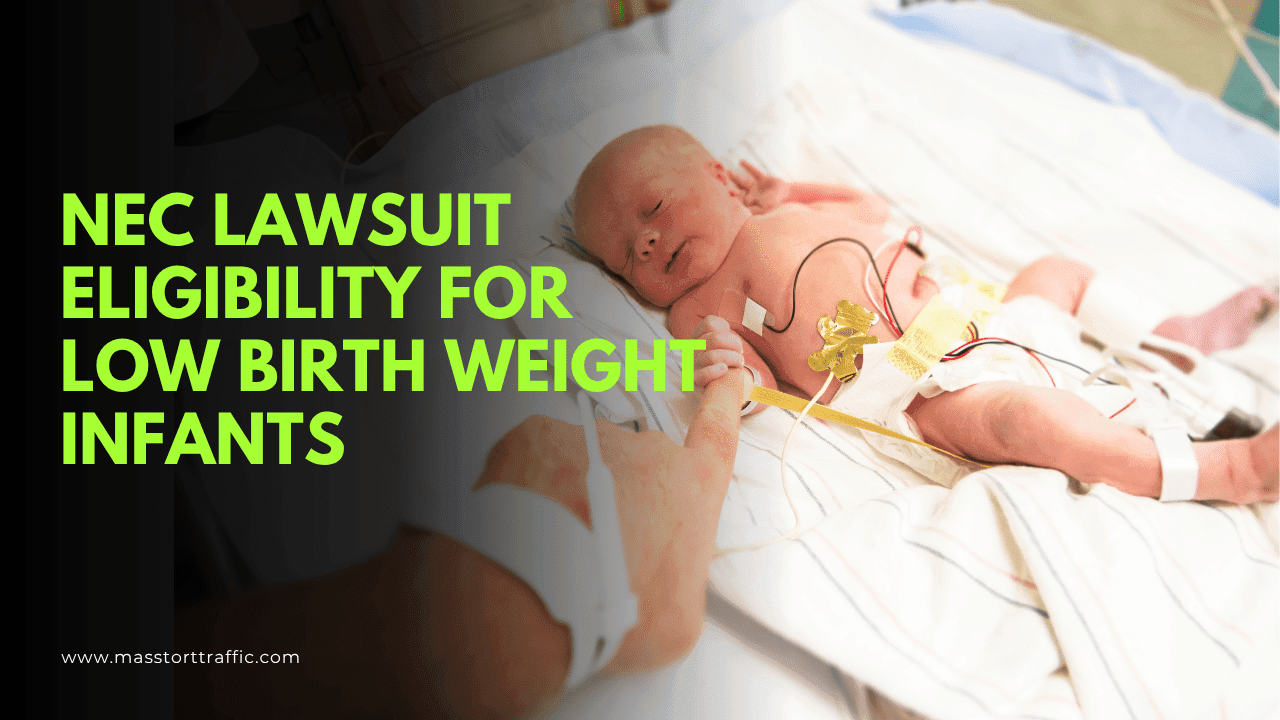
If your premature or low birth weight baby was diagnosed with necrotizing enterocolitis (NEC), you know the terror and heartbreak of watching your child fight for their life. Learning that their condition may have been preventable is even more devastating. This guide explains the low birth weight NEC lawsuit and who is eligible to file a claim.
Key Takeaways: The NEC Baby Formula Lawsuit
- ◆ The Scientific Link: Decades of research show that cow’s milk-based baby formulas, such as Similac® and Enfamil®, significantly increase the risk of necrotizing enterocolitis (NEC) in premature infants. NEC is a severe and often fatal intestinal disease that causes inflammation and death of intestinal tissue.
- ◆ The Legal Claim: Hundreds of families are filing lawsuits against manufacturers Abbott Laboratories and Mead Johnson. The core legal argument is “failure to warn” — that the companies knew their products posed a deadly risk to preemies but deliberately chose not to add a warning label for parents and doctors.
- ◆ Your Family’s Rights: If your premature infant was fed a cow’s milk-based formula in the hospital and was later diagnosed with NEC, your family may be eligible to seek significant compensation for medical bills, pain and suffering, and more. Our team is actively investigating these claims to help families get the justice they deserve.
Ready to Fight for Your Compensation?
Your Free, Confidential, No-Obligation Case Evaluation is Waiting!
GET YOUR FREE CASE EVALUATION NOW →Prefer to call? Call (+1) 210-940-9440 Today
Table of Contents
Why Low Birth Weight Infants Are at Higher Risk for NEC
Necrotizing enterocolitis is a dangerous and often fatal intestinal disease that primarily affects premature newborns. The two single greatest risk factors for NEC are prematurity and low birth weight. The incidence of NEC is inversely proportional to birth weight, meaning the smaller the baby, the higher the risk.
Low birth weight is categorized by weight at birth :
- Low Birth Weight (LBW): Less than 5 pounds, 8 ounces (2,500 grams)
- Very Low Birth Weight (VLBW): Less than 3 pounds, 5 ounces (1,500 grams)
- Extremely Low Birth Weight (ELBW): Less than 2 pounds, 3 ounces (1,000 grams)
Studies show that NEC affects about 5% to 10% of VLBW infants and up to 22% of ELBW infants. These tiny babies are so vulnerable because their bodies are not fully developed. Their immature immune and digestive systems have a difficult time fighting infection, and their bodies may struggle to circulate enough oxygen-rich blood to the fragile intestinal tissues. This creates a perfect storm for the inflammation and tissue death that defines NEC.
The Link Between Cow’s Milk Formula and NEC
In addition to prematurity and low birth weight, the other major risk factor for NEC is formula feeding. Decades of research have shown that premature infants fed cow’s milk-based formulas are significantly more likely to develop NEC than those fed an exclusive human milk diet. One landmark study found the risk was 6 to 10 times higher.
Despite this well-documented danger, manufacturers like Abbott Laboratories (Similac®) and Mead Johnson (Enfamil®) have marketed their bovine-based products as safe and even medically necessary for premature and low birth weight infants in the NICU. The lawsuits against these companies are based on a powerful legal argument: “failure to warn.” Families allege that these companies knew the risks but chose not to put a warning on their products, robbing parents and doctors of the ability to make an informed choice.
DID YOU KNOW?
Do You Qualify for a Low Birth Weight NEC Lawsuit?
While every case is different, the eligibility criteria for the low birth weight NEC lawsuit are generally straightforward. If your family’s experience meets the following conditions, you may have a strong legal claim.
Key Eligibility Criteria
1. Your Baby Was Born Prematurely or with a Low Birth Weight The lawsuits are focused on the most vulnerable infants. To qualify, your child must have been born prematurely (before 37 weeks of gestation) or with a low birth weight (less than 5.5 pounds). This is the primary group that medical science has shown is at the highest risk from cow’s milk-based formula.
2. Your Baby Was Fed Cow’s Milk-Based Formula The second requirement is that your infant was fed a qualifying Similac or Enfamil product in the hospital or NICU. This includes not only liquid formulas but also human milk fortifiers, which are bovine-based powders often added to breast milk to increase calories. Many parents are unsure of the exact products their baby received, but an experienced lawyer can help obtain and review hospital feeding records to confirm this information.
3. Your Baby Was Diagnosed with Necrotizing Enterocolitis (NEC) Finally, your child must have received a formal medical diagnosis of NEC. This diagnosis may have led to emergency surgery, the development of long-term complications like short bowel syndrome, or, in the most tragic cases, wrongful death. Even if your child has since recovered, you may still be eligible for compensation for the harm they endured.
If you believe you meet the criteria for a low birth weight NEC lawsuit, it is crucial to act quickly. Each state has a strict time limit, known as a statute of limitations, for filing a claim.
Ready to Take the First Step Toward Justice?
Speak with our trusted legal team today. Your Free, Confidential, No-Obligation Case Evaluation is waiting — and it only takes a minute to begin.
GET YOUR FREE CASE EVALUATION NOW →Prefer to talk now? Call (+1) 210-940-9440 Today
 100% Secure & Confidential
|
100% Secure & Confidential
|
 No Obligation Consultation
No Obligation ConsultationBy submitting this form, you agree to be contacted by a trusted legal partner for a free case review. This does not create an attorney-client relationship. Confidential and secure.
No family should have to endure the devastation of a preventable illness. Taking legal action can provide the financial resources needed for your child’s lifelong care and hold manufacturers accountable for failing to protect the most fragile infants.
“Don’t lose your right to compensation. In NEC lawsuits, delay is denial. Act today.”
— Visit MassTortTraffic.com or Call (+1) 210-940-9440
EXTERNAL SOURCES
- National Institute of Child Health and Human Development (NIH) – Necrotizing Enterocolitis (NEC): https://www.nichd.nih.gov/health/topics/nec
- Stanford Medicine Children’s Health – Low Birth Weight: https://www.stanfordchildrens.org/en/topic/default?id=low-birth-weight-90-P02382
- World Health Organization (WHO) – Low Birth Weight Definition: https://pmc.ncbi.nlm.nih.gov/articles/PMC5710991/
Frequently Asked Questions About the NEC Baby Formula Lawsuit
Section 1: The Basics of NEC and the Lawsuit
The lawsuits allege that manufacturers of cow’s milk-based formulas, specifically Abbott Laboratories (maker of Similac®) and Mead Johnson (maker of Enfamil®), knew for decades that their products significantly increased the risk of necrotizing enterocolitis (NEC) in premature infants but failed to warn parents and doctors.
Necrotizing enterocolitis (NEC) is a serious and often life-threatening intestinal disease that primarily affects premature and low-birth-weight infants. It causes severe inflammation that can destroy intestinal tissue, leading to a hole (perforation) in the gut, which can cause overwhelming infections like sepsis.
The lawsuits primarily name cow’s milk-based products from Similac and Enfamil that are designed for premature infants. These include specialized formulas and “human milk fortifiers” (which are also bovine-based) such as Similac Special Care, Similac NeoSure, Enfamil NeuroPro EnfaCare, and Enfamil Human Milk Fortifier.
A premature baby’s digestive system is underdeveloped and can’t easily digest the proteins in cow’s milk. This is believed to trigger an inflammatory response that damages the fragile intestinal lining, leading to NEC. Human breast milk contains protective antibodies and immune cells that help a preemie’s gut mature and fight infection.
No. As of late 2025, there has not been a recall of these formulas specifically for the risk of NEC. The lawsuits are based on the manufacturers’ “failure to warn” about the known risks, not a specific contamination or manufacturing defect that would typically trigger a recall.
Symptoms can appear suddenly and include a swollen, hard, or discolored (red or blue) abdomen, bloody stools, green or yellow vomit, difficulty feeding, lethargy (sluggishness), and changes in heart rate, breathing, or body temperature.
Section 2: Eligibility and Filing a Claim
You may be eligible to file a lawsuit if your child was born prematurely or with a low birth weight, was fed a cow’s milk-based formula (like Similac or Enfamil), and was subsequently diagnosed with necrotizing enterocolitis.
Not necessarily. Most states have a “discovery rule,” which means the time limit (statute of limitations) may not start until you discovered the link between the formula and your child’s NEC, which for many parents was only recently. It is crucial to speak with a lawyer immediately to understand the deadline in your state.
The deadline, or statute of limitations, varies by state but is typically two to three years. However, the “discovery rule” and special exceptions for injuries to minors can extend this deadline, so you should not assume it’s too late.
Yes. If you tragically lost your child to NEC, your family may be able to file a wrongful death lawsuit. This type of claim seeks compensation for medical and funeral expenses, as well as for your family’s emotional distress and suffering.
This is very common, and you can still have a case. An experienced NEC lawyer can obtain and review your child’s hospital medical and feeding records to identify the exact products that were used.
It is less common, but you may still have a case. While the vast majority of NEC cases affect premature infants, full-term babies with other health issues can also develop NEC. It is best to consult an attorney to evaluate your specific situation.
Section 3: The Legal Process
The first step is to get a free case review from a law firm that specializes in these cases. They will listen to your story, review the basic facts, and determine if you may be eligible to file a claim. There is no cost or obligation for this consultation.
Ready to Fight for Your Compensation?
Your Free, Confidential, No-Obligation Case Evaluation is Waiting!
GET YOUR FREE CASE EVALUATION NOW →Prefer to call? Call (+1) 210-940-9440 Today.
There are no upfront costs. Reputable law firms handle these cases on a contingency-fee basis, which means they only get paid if they successfully recover compensation for you through a settlement or verdict.
No, it is a mass tort, which is handled through a Multidistrict Litigation (MDL). In a mass tort, each family’s case remains individual, and compensation is based on the specific harm your child suffered. This is different from a class action, where all plaintiffs typically receive the same settlement amount.
MDL stands for Multidistrict Litigation. The NEC MDL (MDL 3026) is a process that consolidates all federal lawsuits into a single court in Illinois to streamline pretrial proceedings like evidence gathering. This makes the process more efficient for everyone involved.
Bellwether trials are “test cases” selected from the larger group of lawsuits in the MDL to be tried first. The outcomes of these trials help both sides understand how juries might respond to the evidence and often guide negotiations for a global settlement for the remaining cases.
These cases can take several months to a few years to resolve. The timeline depends on the complexity of the case and the progress of the larger MDL, including the results of the bellwether trials.
Section 4: Compensation and Settlements
As of late 2025, there has not been a global settlement for all the cases in the federal MDL. However, individual state court trials have resulted in massive verdicts for families, including a $60 million verdict against Enfamil’s maker and a $495 million verdict against Similac’s maker.
The value of each case is unique and depends on the severity of the injury. Legal experts estimate that potential payouts could range from $50,000 for cases with a full recovery to over $500,000 or even millions for cases involving wrongful death or severe, lifelong disabilities like short bowel syndrome.
Compensation can cover both economic and non-economic losses. This includes medical expenses (past and future), lost wages for parents, pain and suffering for both the child and family, and in tragic cases, wrongful death damages like funeral costs.
Section 5: Medical Questions
Survivors of severe NEC can face lifelong challenges, including short bowel syndrome, intestinal scarring (strictures), growth failure, and neurodevelopmental delays like cerebral palsy.
Short bowel syndrome (SBS) is a serious condition that can occur after surgery for NEC, where a large portion of the intestine is removed. The remaining bowel is too short to absorb enough nutrients and fluids, often requiring lifelong intravenous nutrition (PN).
Doctors diagnose NEC based on symptoms like a swollen belly and bloody stools, combined with an abdominal X-ray. The X-ray may show a bubbly appearance in the intestinal wall (pneumatosis intestinalis) or air that has leaked into the abdomen, which are key signs of the disease.
Colic is a pattern of intense crying in an otherwise healthy baby, while reflux is simple spitting up. NEC is a medical emergency with severe, systemic symptoms like a hard, discolored belly, bloody stools, and green vomit. A baby with NEC is visibly and seriously ill, which is very different from a “happy spitter” or a colicky but healthy infant.
Section 6: Legal Strategy and Evidence
The most important evidence is your child’s medical records. These records should show that your baby was born prematurely, was fed a cow’s milk-based formula, and was diagnosed with NEC. Your lawyer will help you gather all necessary documentation.
Under HIPAA, you have a legal right to your child’s medical records. You can request them by contacting the hospital’s Medical Records or Health Information Management (HIM) department and filling out an “Authorization to Release Health Information” form. Your lawyer can also handle this entire process for you.
The primary defense strategy for Abbott and Mead Johnson is to deny that their formulas cause NEC. They argue that NEC is a multifactorial disease of prematurity and that there is no “conclusive” scientific proof of causation.
Bellwether trials are “test cases” selected from the larger group of lawsuits in the MDL to be tried first. The outcomes of these trials help both sides understand how juries might respond to the evidence and often guide negotiations for a global settlement for the remaining cases.
No. Because the NEC lawsuits are a national mass tort, with many cases consolidated in a federal MDL, you can hire the best and most experienced law firm in the country, regardless of where you live. They can file a claim for you in the appropriate court.
Baby Formula NEC
Was Your Preemie Fed Similac in the NICU? You May Have a Case
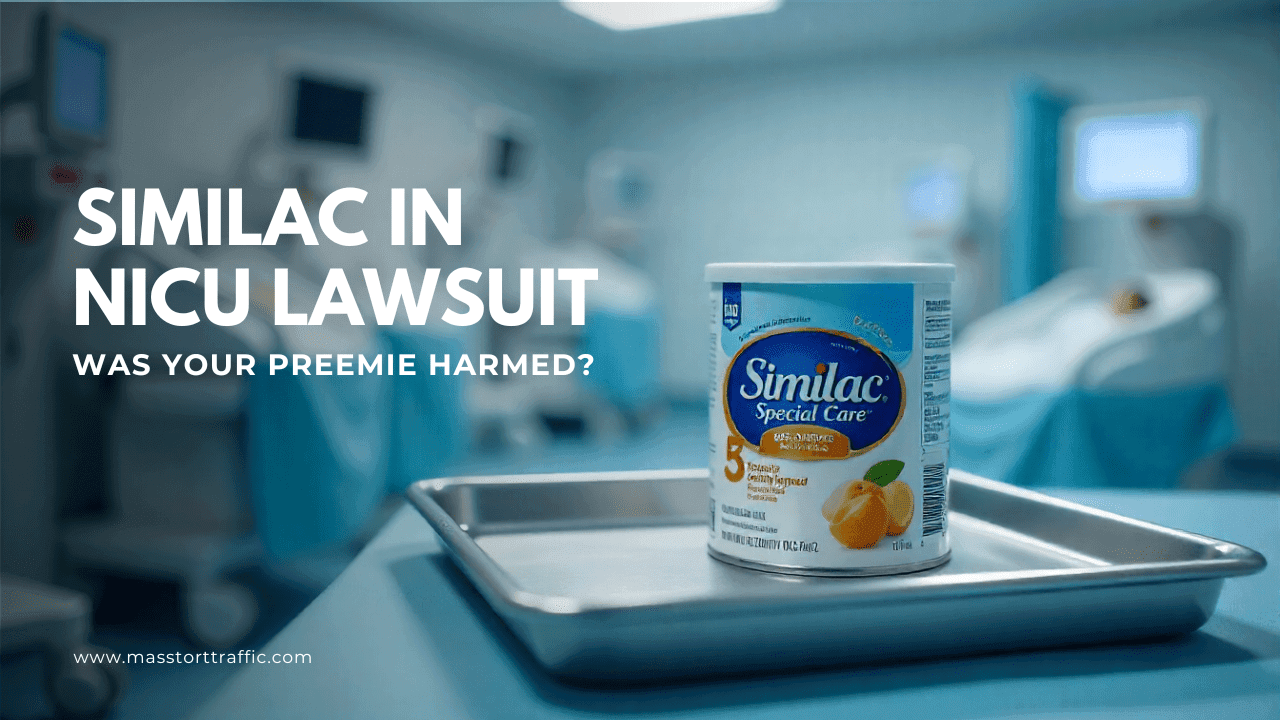
Having a premature baby in the Neonatal Intensive Care Unit (NICU) is an emotional rollercoaster. You place your complete trust in the medical team and the products they use. Learning that a trusted formula brand may have caused your child catastrophic harm is a devastating blow. This guide explains the Similac in NICU lawsuit and your family’s rights.
Key Takeaways: The NEC Baby Formula Lawsuit
- ◆ The Scientific Link: Decades of research show that cow’s milk-based baby formulas, such as Similac® and Enfamil®, significantly increase the risk of necrotizing enterocolitis (NEC) in premature infants. NEC is a severe and often fatal intestinal disease that causes inflammation and death of intestinal tissue.
- ◆ The Legal Claim: Hundreds of families are filing lawsuits against manufacturers Abbott Laboratories and Mead Johnson. The core legal argument is “failure to warn” — that the companies knew their products posed a deadly risk to preemies but deliberately chose not to add a warning label for parents and doctors.
- ◆ Your Family’s Rights: If your premature infant was fed a cow’s milk-based formula in the hospital and was later diagnosed with NEC, your family may be eligible to seek significant compensation for medical bills, pain and suffering, and more. Our team is actively investigating these claims to help families get the justice they deserve.
Ready to Fight for Your Compensation?
Your Free, Confidential, No-Obligation Case Evaluation is Waiting!
GET YOUR FREE CASE EVALUATION NOW →Prefer to call? Call (+1) 210-940-9440 Today
Table of Contents
What Is Necrotizing Enterocolitis (NEC)?
Necrotizing enterocolitis (NEC) is a severe and often sudden intestinal disease that is a leading cause of death for premature infants in the NICU. The condition causes severe inflammation that can destroy the fragile tissue of a preemie’s underdeveloped intestine.
As the tissue dies, a hole (perforation) can form in the intestinal wall. This is a life-threatening emergency that allows bacteria to leak into the abdomen or bloodstream, causing overwhelming infections like sepsis. The mortality rate for infants with NEC can be as high as 40%, and even higher for those who require surgery.
The Link Between Similac and NEC in Premature Babies
For decades, Similac, made by Abbott Laboratories, has been a staple in NICUs across the country, marketed as a safe and necessary source of nutrition for premature infants. However, a growing body of scientific evidence and hundreds of lawsuits tell a different story.
The core of the Similac in NICU lawsuit is the link between cow’s milk-based formulas and an increased risk of NEC. This connection is not new. A landmark 1990 study published in The Lancet found that premature infants fed formula were 6 to 10 times more likely to develop NEC than those fed an exclusive human milk diet.
Human breast milk contains protective antibodies, growth factors, and immune cells that are perfectly suited to help a preemie’s gut mature and fight off infection. The proteins in cow’s milk, on the other hand, are believed to trigger the inflammatory response that leads to NEC in a fragile, underdeveloped intestine.
DID YOU KNOW?
The “Failure to Warn” Allegation
Lawsuits against Abbott Laboratories are centered on a powerful legal claim: “failure to warn”. Families allege that Abbott knew for decades about the scientific evidence linking their cow’s milk-based products to a higher risk of NEC, yet they deliberately chose not to put a warning on their packaging or marketing materials.
Plaintiffs argue that Abbott engaged in aggressive marketing tactics, promoting Similac to hospitals and NICUs as a safe and medically endorsed option for preemies. This alleged failure to disclose the known risks deprived parents and doctors of the ability to make a truly informed decision about their child’s nutrition, a decision that could have prevented a life-altering or fatal illness.
A product designed to nourish the most fragile infants should not carry a hidden, life-threatening risk. When a company fails to warn, it fails to protect.
Which Similac Products Are Named in the Lawsuits?
The litigation targets specific cow’s milk-based Similac products that are frequently given to premature and low-birth-weight infants in the NICU. It’s important to note that this includes not just formulas but also “human milk fortifiers,” which are bovine-based powders added to breast milk to increase calories but may introduce the same risks.
Products commonly named in the Similac in NICU lawsuit include:
- Similac Special Care (in 20, 24, and 30 calorie varieties)
- Similac Special Care High Protein
- Similac Human Milk Fortifier
- Similac NeoSure
- Similac Alimentum
- Similac EleCare
If you are unsure which product your baby was given, an experienced lawyer can help you obtain and review your child’s medical and feeding records to identify the specific formulas used.
The Devastating Impact and the Fight for Justice
For infants who survive NEC, the consequences can be lifelong and catastrophic. Many require emergency surgery to remove the dead portions of their intestine, which can lead to:
- Short Bowel Syndrome: A condition where the remaining intestine cannot absorb enough nutrients, often requiring lifelong intravenous nutrition.
- Intestinal Strictures: Scarring that narrows the intestine and causes blockages, often requiring more surgeries.
- Neurodevelopmental Delays: The severe infection and inflammation can affect brain development, leading to conditions like cerebral palsy or cognitive impairment.
To manage the hundreds of cases filed nationwide, the federal lawsuits have been consolidated into a Multidistrict Litigation (MDL) in Illinois. This process is already yielding major victories for families. In recent state court trials, juries have returned massive verdicts against formula manufacturers, including a $495 million verdict against Abbott Laboratories in July 2024. These outcomes send a clear message that companies can and will be held accountable.
Ready to Take the First Step Toward Justice?
Speak with our trusted legal team today. Your Free, Confidential, No-Obligation Case Evaluation is waiting — and it only takes a minute to begin.
GET YOUR FREE CASE EVALUATION NOW →Prefer to talk now? Call (+1) 210-940-9440 Today
 100% Secure & Confidential
|
100% Secure & Confidential
|
 No Obligation Consultation
No Obligation ConsultationBy submitting this form, you agree to be contacted by a trusted legal partner for a free case review. This does not create an attorney-client relationship. Confidential and secure.
No amount of money can erase the trauma your family has endured. However, taking legal action can provide the critical resources needed for your child’s future care and deliver the justice your family deserves.
“Justice for your child has a deadline. In NEC lawsuits, delay equals denial. Act now.”
— Visit MassTortTraffic.com or Call (+1) 210-940-9440
EXTERNAL SOURCES
- National Institute of Child Health and Human Development (NIH) – Necrotizing Enterocolitis (NEC): https://www.nichd.nih.gov/health/topics/nec
- American Academy of Pediatrics – Necrotizing Enterocolitis (NEC) Overview: https://www.aap.org/en/patient-care/necrotizing-enterocolitis-nec/
- U.S. Surgeon General – The Surgeon General’s Call to Action to Support Breastfeeding (mentions NEC risk):(https://www.ncbi.nlm.nih.gov/books/NBK513357/)
Frequently Asked Questions About the NEC Baby Formula Lawsuit
Section 1: The Basics of NEC and the Lawsuit
The lawsuits allege that manufacturers of cow’s milk-based formulas, specifically Abbott Laboratories (maker of Similac®) and Mead Johnson (maker of Enfamil®), knew for decades that their products significantly increased the risk of necrotizing enterocolitis (NEC) in premature infants but failed to warn parents and doctors.
Necrotizing enterocolitis (NEC) is a serious and often life-threatening intestinal disease that primarily affects premature and low-birth-weight infants. It causes severe inflammation that can destroy intestinal tissue, leading to a hole (perforation) in the gut, which can cause overwhelming infections like sepsis.
The lawsuits primarily name cow’s milk-based products from Similac and Enfamil that are designed for premature infants. These include specialized formulas and “human milk fortifiers” (which are also bovine-based) such as Similac Special Care, Similac NeoSure, Enfamil NeuroPro EnfaCare, and Enfamil Human Milk Fortifier.
A premature baby’s digestive system is underdeveloped and can’t easily digest the proteins in cow’s milk. This is believed to trigger an inflammatory response that damages the fragile intestinal lining, leading to NEC. Human breast milk contains protective antibodies and immune cells that help a preemie’s gut mature and fight infection.
No. As of late 2025, there has not been a recall of these formulas specifically for the risk of NEC. The lawsuits are based on the manufacturers’ “failure to warn” about the known risks, not a specific contamination or manufacturing defect that would typically trigger a recall.
Symptoms can appear suddenly and include a swollen, hard, or discolored (red or blue) abdomen, bloody stools, green or yellow vomit, difficulty feeding, lethargy (sluggishness), and changes in heart rate, breathing, or body temperature.
Section 2: Eligibility and Filing a Claim
You may be eligible to file a lawsuit if your child was born prematurely or with a low birth weight, was fed a cow’s milk-based formula (like Similac or Enfamil), and was subsequently diagnosed with necrotizing enterocolitis.
Not necessarily. Most states have a “discovery rule,” which means the time limit (statute of limitations) may not start until you discovered the link between the formula and your child’s NEC, which for many parents was only recently. It is crucial to speak with a lawyer immediately to understand the deadline in your state.
The deadline, or statute of limitations, varies by state but is typically two to three years. However, the “discovery rule” and special exceptions for injuries to minors can extend this deadline, so you should not assume it’s too late.
Yes. If you tragically lost your child to NEC, your family may be able to file a wrongful death lawsuit. This type of claim seeks compensation for medical and funeral expenses, as well as for your family’s emotional distress and suffering.
This is very common, and you can still have a case. An experienced NEC lawyer can obtain and review your child’s hospital medical and feeding records to identify the exact products that were used.
It is less common, but you may still have a case. While the vast majority of NEC cases affect premature infants, full-term babies with other health issues can also develop NEC. It is best to consult an attorney to evaluate your specific situation.
Section 3: The Legal Process
The first step is to get a free case review from a law firm that specializes in these cases. They will listen to your story, review the basic facts, and determine if you may be eligible to file a claim. There is no cost or obligation for this consultation.
Ready to Fight for Your Compensation?
Your Free, Confidential, No-Obligation Case Evaluation is Waiting!
GET YOUR FREE CASE EVALUATION NOW →Prefer to call? Call (+1) 210-940-9440 Today.
There are no upfront costs. Reputable law firms handle these cases on a contingency-fee basis, which means they only get paid if they successfully recover compensation for you through a settlement or verdict.
No, it is a mass tort, which is handled through a Multidistrict Litigation (MDL). In a mass tort, each family’s case remains individual, and compensation is based on the specific harm your child suffered. This is different from a class action, where all plaintiffs typically receive the same settlement amount.
MDL stands for Multidistrict Litigation. The NEC MDL (MDL 3026) is a process that consolidates all federal lawsuits into a single court in Illinois to streamline pretrial proceedings like evidence gathering. This makes the process more efficient for everyone involved.
Bellwether trials are “test cases” selected from the larger group of lawsuits in the MDL to be tried first. The outcomes of these trials help both sides understand how juries might respond to the evidence and often guide negotiations for a global settlement for the remaining cases.
These cases can take several months to a few years to resolve. The timeline depends on the complexity of the case and the progress of the larger MDL, including the results of the bellwether trials.
Section 4: Compensation and Settlements
As of late 2025, there has not been a global settlement for all the cases in the federal MDL. However, individual state court trials have resulted in massive verdicts for families, including a $60 million verdict against Enfamil’s maker and a $495 million verdict against Similac’s maker.
The value of each case is unique and depends on the severity of the injury. Legal experts estimate that potential payouts could range from $50,000 for cases with a full recovery to over $500,000 or even millions for cases involving wrongful death or severe, lifelong disabilities like short bowel syndrome.
Compensation can cover both economic and non-economic losses. This includes medical expenses (past and future), lost wages for parents, pain and suffering for both the child and family, and in tragic cases, wrongful death damages like funeral costs.
Section 5: Medical Questions
Survivors of severe NEC can face lifelong challenges, including short bowel syndrome, intestinal scarring (strictures), growth failure, and neurodevelopmental delays like cerebral palsy.
Short bowel syndrome (SBS) is a serious condition that can occur after surgery for NEC, where a large portion of the intestine is removed. The remaining bowel is too short to absorb enough nutrients and fluids, often requiring lifelong intravenous nutrition (PN).
Doctors diagnose NEC based on symptoms like a swollen belly and bloody stools, combined with an abdominal X-ray. The X-ray may show a bubbly appearance in the intestinal wall (pneumatosis intestinalis) or air that has leaked into the abdomen, which are key signs of the disease.
Colic is a pattern of intense crying in an otherwise healthy baby, while reflux is simple spitting up. NEC is a medical emergency with severe, systemic symptoms like a hard, discolored belly, bloody stools, and green vomit. A baby with NEC is visibly and seriously ill, which is very different from a “happy spitter” or a colicky but healthy infant.
Section 6: Legal Strategy and Evidence
The most important evidence is your child’s medical records. These records should show that your baby was born prematurely, was fed a cow’s milk-based formula, and was diagnosed with NEC. Your lawyer will help you gather all necessary documentation.
Under HIPAA, you have a legal right to your child’s medical records. You can request them by contacting the hospital’s Medical Records or Health Information Management (HIM) department and filling out an “Authorization to Release Health Information” form. Your lawyer can also handle this entire process for you.
The primary defense strategy for Abbott and Mead Johnson is to deny that their formulas cause NEC. They argue that NEC is a multifactorial disease of prematurity and that there is no “conclusive” scientific proof of causation.
Bellwether trials are “test cases” selected from the larger group of lawsuits in the MDL to be tried first. The outcomes of these trials help both sides understand how juries might respond to the evidence and often guide negotiations for a global settlement for the remaining cases.
No. Because the NEC lawsuits are a national mass tort, with many cases consolidated in a federal MDL, you can hire the best and most experienced law firm in the country, regardless of where you live. They can file a claim for you in the appropriate court.

 Mass Torts Lawsuit1 year ago
Mass Torts Lawsuit1 year agoZantac Lawsuit Health Risks, Legal Actions, and Settlement Updates 2024

 Mass Torts Lawsuit1 year ago
Mass Torts Lawsuit1 year agoRoundup Lawsuit 2025: What You Need to Know About Glyphosate Claims

 Mass Torts Lawsuit1 year ago
Mass Torts Lawsuit1 year agoThe Roundup Non-Hodgkin’s Lymphoma Lawsuit: A Journey Through the Legal Battle

 Roundup Weed Killer1 year ago
Roundup Weed Killer1 year agoEverything You Need to Know About Roundup Lawsuit

 Mass Torts Lawsuit1 year ago
Mass Torts Lawsuit1 year agoTop 5 Glyphosate Health Risks: Shocking Facts About Roundup Exposure You Need to Know

 Mass Torts Lawsuit1 year ago
Mass Torts Lawsuit1 year agoHow to Join the Zantac Lawsuit Mass Tort | Zantac Settlement Guide

 Mass Torts Lawsuit1 year ago
Mass Torts Lawsuit1 year agoZantac Lawsuit Statute of Limitations | What You Need to Know

 Mass Torts Lawsuit1 year ago
Mass Torts Lawsuit1 year agoBest Law Firm for Roundup Lawsuits: Do You Qualify to File a Roundup Lawsuit?

